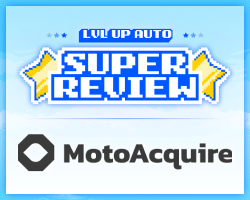CRM buying is a very personal experience. In the introduction to this 5 part series I mentioned that making a decision on a CRM is massive, and I think we all know that. However, it isn’t all about just buying a CRM; there are some elements I covered that pertain to better utilizing your current CRM. To conclude the series I will be covering the costs and expenses of CRM (after the page jump).
 If you didn’t read this entire series word-for-word, I understand as it is a lot to take-in. I tried to cover it in such a way that didn’t point any dirty fingers at your current system as my real intention was to get you thinking more about what CRM really is. This is an educational series plain and simple.
If you didn’t read this entire series word-for-word, I understand as it is a lot to take-in. I tried to cover it in such a way that didn’t point any dirty fingers at your current system as my real intention was to get you thinking more about what CRM really is. This is an educational series plain and simple.
With that said I know CRM is a tough topic as it is probably another 5 years away from being a fully-utilized technology. Hopefully we can all look back at this series in 2016 and say “Alex – geeeez, that was some seriously basic stuff you were talking about back in the day.”
It was also not my intent to give you an exact list of features to ask about in your CRM demos. I have personally created quite a few lists of “CRM must haves” for my dealership and have seen a few from others. The one thing that is constant amongst all my lists, and the others I’ve seen, is that they’re all different. This fact simply proves CRM buying is a personal experience.
The key takeaway from this entire series: CRM helps you play the numbers game through good process.
With that said there are some, if I might say it without sounding cocky, strong factors I covered you should incorporate into your CRM approach. As someone deciding on which CRM system to partner with, or someone who controls the output of CRM (CRM Architect) in your dealership, you should keep in mind that your audience is the person who speaks to customers regularly (the basic user). I hate to say this but it is the basic user who is typically the least interested in your business (read: Why we Suck). This is the person who makes or breaks your business, and makes or breaks your CRM. However, when looking at a CRM they should be considered above all others. The beginning of the CRM Process article talks a bit about what to look for in regards to them, and I highly suggest that you at least read that one article thoroughly.
Managers are busy. I’d love to talk about the things that make them so busy and whether those things actually help make better sales agents or merchandising, but that’s a different set of articles (we’ll call that one leadership qualities). When it comes to CRM, you want your managers to interact with the system quickly and be able to make decisions on those seconds they can afford to glance at the system. Don’t let your sales manager create a CRM rebellion solely because the pencil tool doesn’t push to the DMS or pull in rates. The pencil tool, as great as it truly is when properly defined, is not CRM. CRM is maintaining and organizing a database that allows good follow-up. Your sales managers should be a major part of that.
Executives and Decision-Makers have mostly been left out of CRM’s to date, unless they like to get deeply involved. These are the people who usually decide which CRM system will be a part of the organization because of the costs. I’ll argue with any one of them that CRM should have the most consideration based on usability above costs because I believe CRM moves the needle more than any other technology. If you’ll spend up to 1 year considering which DMS provider is best to partner with (usually because of money) then CRM should be the second biggest decision; it is not a two hour demo decision.
CRM Rebellions
Chances are you thoroughly read this entire series because you and/or your people are upset with your current CRM provider. Not to sound like too much of a CRM know-it-all, but I have definitely seen some CRM Rebellions. I fully admit to being the Founding Fathers of a CRM revolution a few years ago (the CFO at Checkered Flag is probably loving me finally admitting that). After instigating some I can say that CRM rebellions really are a sign of weakness. This weakness is either on the part of the vendor or you; most of the time it is a combination of both.
All technologies solve some sort of problem, and that inherently makes each one good. Where they are bad is when they don’t solve your particular problems, or they don’t innovate to keep up with your advancing abilities.
In the case of my rebellions (hopefully yours too), the latter part of that quote is what fueled my dissension. A CRM rebellion sucks. It does no good for anyone. It wouldn’t be a true CRM series if this wasn’t covered and defined, so make sure that any rebellions you encounter are for the right reasons.
Responsibilities of the CRM provider
CRM is a two-way road. Because of the depth it covers your vendor is more of a partner than with any other technology you’ll pay for. Your CRM provider needs to:
- Provide support to every user
- Take your feature requests seriously, and provide reasoning when it isn’t implemented
- Make the tool available for use at least while you’re open (also called up-time)
- Don’t make unnecessary enhancements and system updates at month end
- Provide training on how to use the CRM system
Those are basic items you should expect from any technology provider, but those are items that are exponentially important when the technology is a requirement of doing everyday business. Your mileage may vary on that list depending on your individual needs.
Buy-in
Wow, whoever thought those two little words could equate to such an enormous issue? Buy-in is a critical piece of anything and that goes way beyond technology. Who’s responsibility is buy-in when it comes to a CRM? It is the dealership’s. As usual, buy-in starts at the top, but that buy-in rarely comes from the President’s level. The top, as it relates to CRM in this case, is really the Vice President or General Manager level depending on your dealership’s organizational arrangement. Sometimes buy-in is created by allowing users’ input in the system. What I mean by that is allowing anyone to have a voice and implementing the things that make the most sense from all the voices.
I’ve mentioned the CRM Architect a few times in this series and if you assign one of your employees to thoroughly own the CRM you’ll put some very reliable miles on your system.
Knowing what you want
Because we suffer from supreme ADD (Attention Deficit Disorder) due to our month-to-month mentalities we struggle with knowing what we want. What we want changes after every month-end close out. Unfortunately CRM setup and tweaking requires good vision. It may be worth your time to hire a consultant who can help you figure this out. Until I stepped out of the dealership I didn’t realize just how ADD I was.
Since I stepped out of the dealership I’ve met a few people from some large dealer groups who have the funding to hire outside of the automotive industry. These “outside” people bring vision beyond the 31st of the month even though they might not know how to fully communicate with every player in the store. That vision they bring really helps these very smart groups plan future strategy.
If the budget doesn’t allow you to place a help wanted ad in Palo Alto, then you’re going to have to step outside yourself to look very deeply at yourself (you should probably reread that statement). It is tough. But this is the only way to understand who you are and how to accomplish who you want to become. A consultant can help you see a clearer picture of yourself.
Paying on CRM – don’t be afraid to fire people
Are your payplans still based around volume and gross, and only volume and gross? Okay, maybe there is a CSI bonus in there but have your payplans fundamentally changed in the last 10 years? If not, your money-driven employees are not going to see the true value of the CRM. Change their payplans to focus on playing the numbers game. Change the pay to garner appointments. Change the pay to drive more phone calls and cleaner data entry. Create a modern payplan.
If changing the payplan is too much to swallow, then fire someone. Yeah, you read that right – I just said fire someone.
Okay, okay that’s a little harsh. But I hope you can agree with me that anyone not taking your CRM investment seriously is negating that investment. Sometimes an example must be made.
Costs and Monthly expense
A good CRM is expensive. The old saying “you get what you pay for” definitely applies. Most of the better CRM’s start around $2,000 per store per month.
How much do you pay for your DMS and all the things that go into that animal? How much do you pay for your advertising? I bet those costs are enough to make you pay close attention to how well they’re running. I’m not going to tell you to bleed the bank account dry on CRM, but I just want to point-out that sometimes the best buy-in occurs where the costs are the greatest. If you’re teetering on a CRM system because of costs, strongly consider what a big CRM investment can bring to the table with full buy-in. That includes devoting someone on your staff to its consistent utilization.
With the proper process that promotes playing the numbers game, some smart tweaking of payplans, and a CRM partner that fits what you want CRM is the greatest thing since sliced bread.
Conclusion to the conclusion
I’ve written some things that should be tough for everyone to read in this series. They’re tough because CRM is a mirror that requires you to understand your own strengths and weaknesses. We’re all sales people and in order to be good sales people we have to have a bit of an ego with our competitive edge. Looking into the mirror is hard to do for us.
With that said, most of us, who have been using CRM for a while, probably have not utilized it to its full potential. We may or may not have realized that CRM is really here to help us play the numbers game better. My main intention with this series is to help you understand this point. When you get that simple fact, CRM becomes simpler and you can approach any demo with a cleaner picture of what you want from it.
I hope this series helped and continues to help.
How to buy a dealership CRM series:
Part 1: Introduction
Part 2: Process
Part 3: Marketing
Part 4: Decision-Making
Part 5: Conclusion (this article)









